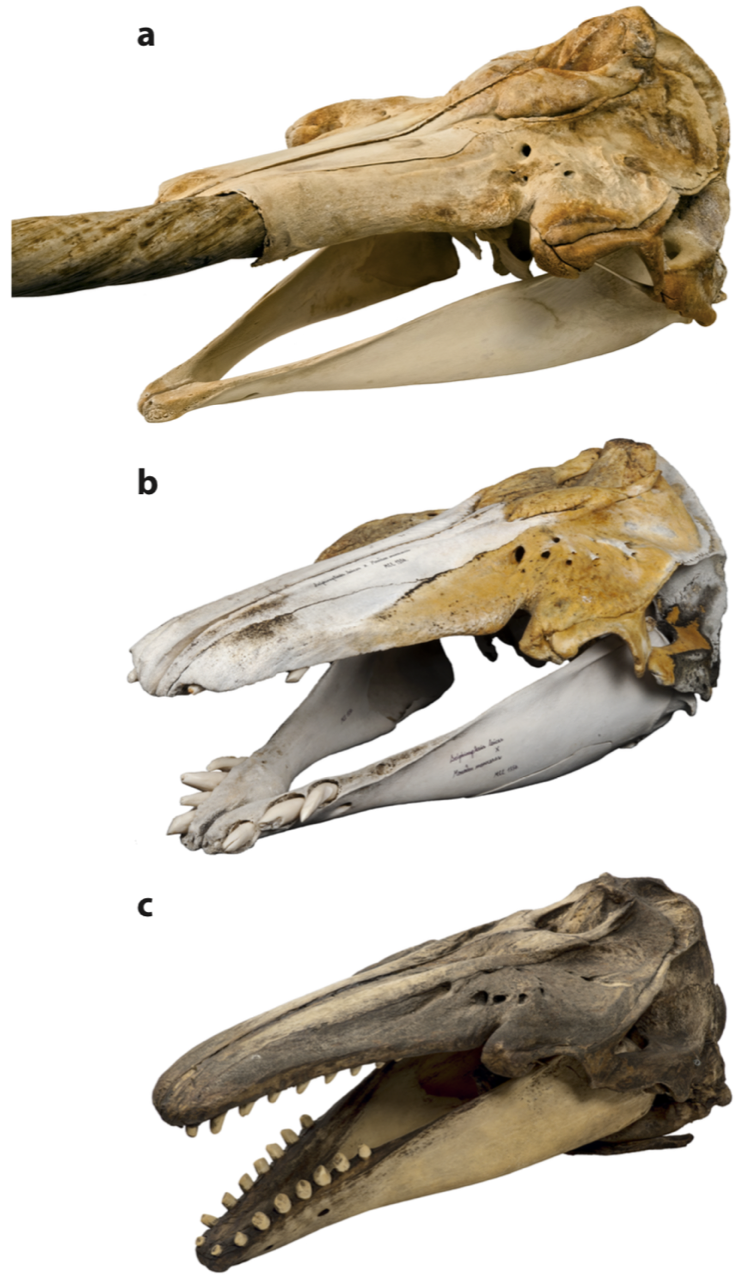
‘Afraid of the water’? Life in a city that dumps billions of litres of raw sewage into lakes and rivers
10 billion litres of sewage are dumped into Winnipeg’s lakes and rivers each year. Some...
A rare whale skull discovered by an Inuit hunter 30 years ago in Greenland has been confirmed by a Canadian scientist to be the hybrid calf of a beluga father and a narwhal mother — otherwise known as a narluga.
A study published today in Scientific Reports reveals the results of DNA and chemical analyses performed by Trent University’s Paul Szpak and identifies the first-ever confirmed hybrid of the Arctic marine mammals.
At Trent University in Peterborough, Ont., Szpak and his team performed a chemical analysis using a technique called “isotope ratio mass spectrometry” on the hybrid remains and on other narwhals and belugas.
Using this technology, he was able to identify that the “narluga” had a very different diet than either of its parent species. This may have been the result of the whale’s unusual teeth — some long and peg-like like the beluga, others spiraled and resembling corkscrews, like the narwhal tusk.
“To get the chance to analyze material from an animal that nobody has ever worked with before has been extremely cool,” Szpak, Canada Research Chair in environmental archeology, said.
“The findings also teach the world about the biology of belugas and narwhals and how the two species interact.”

Skulls of (a) narwhal, (b) the hybrid analyzed in the study, and (c) beluga. Photos: Mikkel Høegh Post / Natural History Museum of Denmark
The whale is just one of a spate of recent discoveries of hybrid species. Grolar bears — grizzly-polar bear hybrids — have turned up at least eight times since 2006. Formerly separate eastern and western populations of bowhead whales have traversed the increasingly ice-free Arctic to meet, though not mate; a suspected bowhead-northern right whale hybrid, meanwhile, has been photographed.
Scientists have identified 22 Arctic or near-Arctic species that could potentially hybridize, and yes, the list includes the narwhal and beluga. Most of these opportunities are being enhanced by climate change as it removes the barriers between species.
And that hybridization may not be a good thing for biodiversity.
“As the genomes of species become mixed, adaptive gene combinations will be lost,” the researchers of the hybridization paper wrote in 2010. Those adaptive gene combinations include things like the hollow, “white” fur of polar bears, which gives them an advantage in hunting.
— With files from Jimmy Thomson
Get the inside scoop on The Narwhal’s environment and climate reporting by signing up for our free newsletter. On a warm September evening nearly 15...
Continue reading
10 billion litres of sewage are dumped into Winnipeg’s lakes and rivers each year. Some...

Court sides with Xatśūll First Nation, temporarily halting Mount Polley mine waste expansion

Break out the champagne: Emma’s storied life and leadership in journalism has earned her the...
